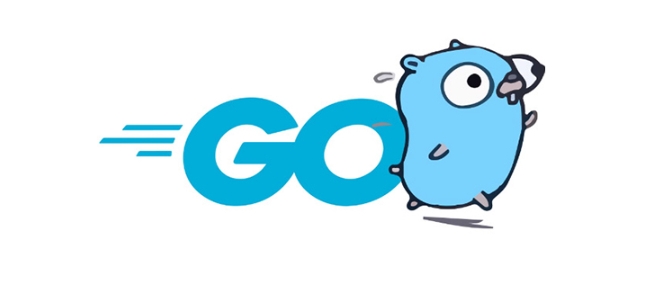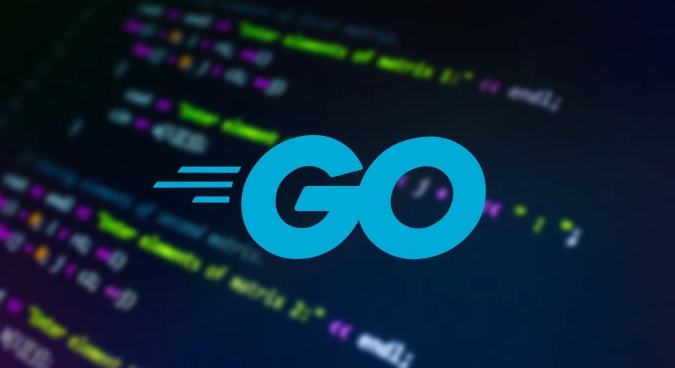 Backend Development
Backend Development
 Golang
Golang
 Strategies for Integrating Golang Services with Existing Python Infrastructure
Strategies for Integrating Golang Services with Existing Python Infrastructure
Strategies for Integrating Golang Services with Existing Python Infrastructure
Jul 02, 2025 pm 04:39 PMTo integrate Golang services with existing Python infrastructure, use REST APIs or gRPC for inter-service communication, allowing Go and Python apps to interact seamlessly through standardized protocols.1. Use REST APIs (via frameworks like Gin in Go and Flask in Python) or gRPC (with Protocol Buffers) for efficient, cross-language communication.2. Share data via a common database (e.g., PostgreSQL) or message queues (e.g., Kafka) to decouple services and enable asynchronous processing.3. Leverage Docker and containerization to ensure consistent deployment across both language environments, using Docker Compose or Kubernetes for orchestration.4. Consider embedding one language within the other (e.g., calling Go from Python via ctypes or running Python scripts in Go) only when high-performance or tight integration is required, as these methods are complex and best reserved for advanced use cases.

Integrating Golang services with an existing Python infrastructure can be a powerful way to leverage the strengths of both languages — Go for performance and concurrency, and Python for flexibility and ecosystem. The key is to treat them as complementary parts of a larger system rather than competing tools.

1. Use REST APIs or gRPC for Inter-Service Communication
One of the most straightforward ways to connect Go and Python services is through standard communication protocols like REST or gRPC.

REST APIs are widely supported in both ecosystems. You can build a Go service using frameworks like Gin or Echo and expose endpoints that your Python app (e.g., Flask or Django) calls via HTTP requests.
gRPC is another solid option, especially if you need high-performance communication. It uses Protocol Buffers for serialization, which works well across languages. Define your service interface once, generate client and server code for both Go and Python, and you're good to go.

Tips:
- Keep API contracts clear and versioned.
- Use JSON for REST unless performance is critical — it’s easier to debug.
- For gRPC, make sure both teams understand how to manage
.protofiles.
2. Share Data Through a Common Database or Message Queue
Instead of direct API calls, sometimes it makes more sense to let services communicate through shared data stores.
You can use a common database like PostgreSQL or MySQL where both Go and Python applications read from and write to. This avoids tight coupling and allows each service to process data at its own pace.
Alternatively, message queues like RabbitMQ, Kafka, or even Redis can act as the middle layer. A Python service publishes a message, and a Go service consumes it — or vice versa.
Why this helps:
- Decouples services so they don’t have to be online at the same time.
- Eases scaling since each part can grow independently.
- Reduces latency issues from synchronous calls.
3. Leverage Docker and Containerization for Consistent Deployment
Both Go and Python apps can run inside containers, making deployment much smoother when integrating across languages.
Use Docker images for each service — a Python web app in one container, a Go microservice in another. Then orchestrate them together using Docker Compose or Kubernetes.
This approach ensures that environment differences (like Python virtual environments vs Go modules) don’t cause issues during integration.
Best practices:
- Keep dependencies isolated per service.
- Reuse base images where possible to reduce overhead.
- Use environment variables for configuration, not hardcoded values.
4. Consider Embedding One Language Inside the Other (Advanced)
In some cases, you might want tighter integration — like calling Go code from Python or embedding Python scripts into a Go binary.
For Go → Python: Tools like Cgo combined with Python's C API can work, but it’s complex. More practical options include using PyGoPython or running Python scripts as subprocesses from Go.
For Python → Go: Wrapping Go code as a C shared library and calling it via ctypes in Python is possible, though not trivial.
When to consider this:
- When performance-critical sections are better written in Go.
- When legacy Python systems must directly call optimized Go functions.
These methods are advanced and should only be used when necessary. Most integrations will work fine with APIs or messaging.
That’s basically how you can bring Go services into a Python-based architecture without tearing everything down. It doesn't have to be all-or-nothing — start small, pick the integration method that fits your team and use case, and build from there.
The above is the detailed content of Strategies for Integrating Golang Services with Existing Python Infrastructure. For more information, please follow other related articles on the PHP Chinese website!

Hot AI Tools

Undress AI Tool
Undress images for free

Undresser.AI Undress
AI-powered app for creating realistic nude photos

AI Clothes Remover
Online AI tool for removing clothes from photos.

Clothoff.io
AI clothes remover

Video Face Swap
Swap faces in any video effortlessly with our completely free AI face swap tool!

Hot Article

Hot Tools

Notepad++7.3.1
Easy-to-use and free code editor

SublimeText3 Chinese version
Chinese version, very easy to use

Zend Studio 13.0.1
Powerful PHP integrated development environment

Dreamweaver CS6
Visual web development tools

SublimeText3 Mac version
God-level code editing software (SublimeText3)

Hot Topics
 How to use PHP combined with AI to achieve text error correction PHP syntax detection and optimization
Jul 25, 2025 pm 08:57 PM
How to use PHP combined with AI to achieve text error correction PHP syntax detection and optimization
Jul 25, 2025 pm 08:57 PM
To realize text error correction and syntax optimization with AI, you need to follow the following steps: 1. Select a suitable AI model or API, such as Baidu, Tencent API or open source NLP library; 2. Call the API through PHP's curl or Guzzle and process the return results; 3. Display error correction information in the application and allow users to choose whether to adopt it; 4. Use php-l and PHP_CodeSniffer for syntax detection and code optimization; 5. Continuously collect feedback and update the model or rules to improve the effect. When choosing AIAPI, focus on evaluating accuracy, response speed, price and support for PHP. Code optimization should follow PSR specifications, use cache reasonably, avoid circular queries, review code regularly, and use X
 PHP calls AI intelligent voice assistant PHP voice interaction system construction
Jul 25, 2025 pm 08:45 PM
PHP calls AI intelligent voice assistant PHP voice interaction system construction
Jul 25, 2025 pm 08:45 PM
User voice input is captured and sent to the PHP backend through the MediaRecorder API of the front-end JavaScript; 2. PHP saves the audio as a temporary file and calls STTAPI (such as Google or Baidu voice recognition) to convert it into text; 3. PHP sends the text to an AI service (such as OpenAIGPT) to obtain intelligent reply; 4. PHP then calls TTSAPI (such as Baidu or Google voice synthesis) to convert the reply to a voice file; 5. PHP streams the voice file back to the front-end to play, completing interaction. The entire process is dominated by PHP to ensure seamless connection between all links.
 Completed python blockbuster online viewing entrance python free finished website collection
Jul 23, 2025 pm 12:36 PM
Completed python blockbuster online viewing entrance python free finished website collection
Jul 23, 2025 pm 12:36 PM
This article has selected several top Python "finished" project websites and high-level "blockbuster" learning resource portals for you. Whether you are looking for development inspiration, observing and learning master-level source code, or systematically improving your practical capabilities, these platforms are not to be missed and can help you grow into a Python master quickly.
 How to use PHP to develop product recommendation module PHP recommendation algorithm and user behavior analysis
Jul 23, 2025 pm 07:00 PM
How to use PHP to develop product recommendation module PHP recommendation algorithm and user behavior analysis
Jul 23, 2025 pm 07:00 PM
To collect user behavior data, you need to record browsing, search, purchase and other information into the database through PHP, and clean and analyze it to explore interest preferences; 2. The selection of recommendation algorithms should be determined based on data characteristics: based on content, collaborative filtering, rules or mixed recommendations; 3. Collaborative filtering can be implemented in PHP to calculate user cosine similarity, select K nearest neighbors, weighted prediction scores and recommend high-scoring products; 4. Performance evaluation uses accuracy, recall, F1 value and CTR, conversion rate and verify the effect through A/B tests; 5. Cold start problems can be alleviated through product attributes, user registration information, popular recommendations and expert evaluations; 6. Performance optimization methods include cached recommendation results, asynchronous processing, distributed computing and SQL query optimization, thereby improving recommendation efficiency and user experience.
 How to develop AI intelligent form system with PHP PHP intelligent form design and analysis
Jul 25, 2025 pm 05:54 PM
How to develop AI intelligent form system with PHP PHP intelligent form design and analysis
Jul 25, 2025 pm 05:54 PM
When choosing a suitable PHP framework, you need to consider comprehensively according to project needs: Laravel is suitable for rapid development and provides EloquentORM and Blade template engines, which are convenient for database operation and dynamic form rendering; Symfony is more flexible and suitable for complex systems; CodeIgniter is lightweight and suitable for simple applications with high performance requirements. 2. To ensure the accuracy of AI models, we need to start with high-quality data training, reasonable selection of evaluation indicators (such as accuracy, recall, F1 value), regular performance evaluation and model tuning, and ensure code quality through unit testing and integration testing, while continuously monitoring the input data to prevent data drift. 3. Many measures are required to protect user privacy: encrypt and store sensitive data (such as AES
 python seaborn jointplot example
Jul 26, 2025 am 08:11 AM
python seaborn jointplot example
Jul 26, 2025 am 08:11 AM
Use Seaborn's jointplot to quickly visualize the relationship and distribution between two variables; 2. The basic scatter plot is implemented by sns.jointplot(data=tips,x="total_bill",y="tip",kind="scatter"), the center is a scatter plot, and the histogram is displayed on the upper and lower and right sides; 3. Add regression lines and density information to a kind="reg", and combine marginal_kws to set the edge plot style; 4. When the data volume is large, it is recommended to use "hex"
 How to use PHP to implement AI content recommendation system PHP intelligent content distribution mechanism
Jul 23, 2025 pm 06:12 PM
How to use PHP to implement AI content recommendation system PHP intelligent content distribution mechanism
Jul 23, 2025 pm 06:12 PM
1. PHP mainly undertakes data collection, API communication, business rule processing, cache optimization and recommendation display in the AI content recommendation system, rather than directly performing complex model training; 2. The system collects user behavior and content data through PHP, calls back-end AI services (such as Python models) to obtain recommendation results, and uses Redis cache to improve performance; 3. Basic recommendation algorithms such as collaborative filtering or content similarity can implement lightweight logic in PHP, but large-scale computing still depends on professional AI services; 4. Optimization needs to pay attention to real-time, cold start, diversity and feedback closed loop, and challenges include high concurrency performance, model update stability, data compliance and recommendation interpretability. PHP needs to work together to build stable information, database and front-end.
 How to develop AI-based text summary with PHP Quick Refining Technology
Jul 25, 2025 pm 05:57 PM
How to develop AI-based text summary with PHP Quick Refining Technology
Jul 25, 2025 pm 05:57 PM
The core of PHP's development of AI text summary is to call external AI service APIs (such as OpenAI, HuggingFace) as a coordinator to realize text preprocessing, API requests, response analysis and result display; 2. The limitation is that the computing performance is weak and the AI ecosystem is weak. The response strategy is to leverage APIs, service decoupling and asynchronous processing; 3. Model selection needs to weigh summary quality, cost, delay, concurrency, data privacy, and abstract models such as GPT or BART/T5 are recommended; 4. Performance optimization includes cache, asynchronous queues, batch processing and nearby area selection. Error processing needs to cover current limit retry, network timeout, key security, input verification and logging to ensure the stable and efficient operation of the system.





